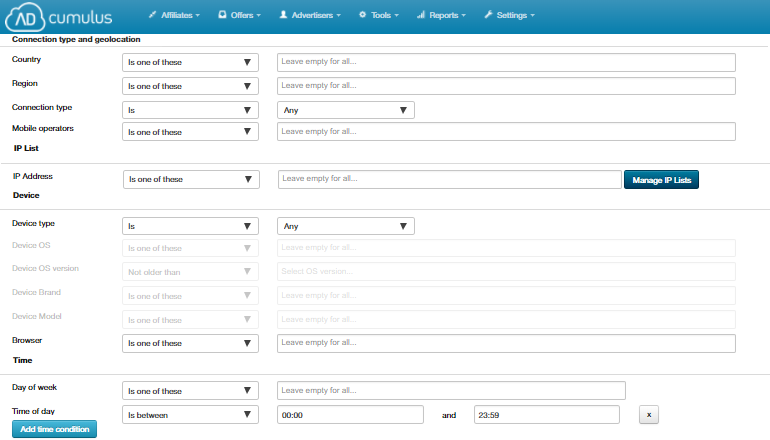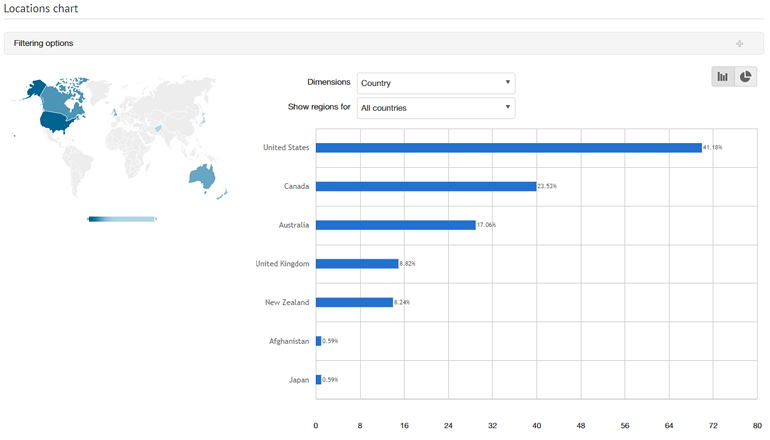Online marketing blog
Read about the latest industry trends and AdCumulus specials.
Reach new customers with these types of targeting
By on 30. April 2018.

Finding new customers for your product or service can be easier, if you used some target marketing strategies.
Whether we’re talking desktop or mobile, today we’ll discuss a few types of targeting you can use to achieve the best results.
What is targeting exactly?
Essentially, it means detecting a group of potential customers based on certain criteria, and displaying advertisements made specifically for them.
In the example of a small business, it would go something like this:
Imagine you run a rent-a-car company. Don’t take us for granted, but let’s say that most people behind steering wheels still like to drive their own cars. Those who don’t, mostly ride taxis (or use various ride-sharing platforms nowadays).
We would assume that in this case you would have a pretty specific customer base. Therefore, you don’t need to waste your marketing efforts on the general public.
Instead, you’d like to run a specific marketing campaign and aim for people who would actually pay money for your service, rather than the mass market.
In order to do that, you need to do some market research and find out:
- who rents cars
- where most rentals happen
- when they happen
- which type of cars, etc.
Assuming you did your research the right way, it can help you define your specific audience or target customers. These are the people you should probably show your ads to, because they have the highest chance of converting.
Your job would be easier if you use some sort of a system of platform, which allows different types of targeting. To illustrate, we’ll use the example of how our Affiliate Software works.
First you need to define a set of conditions, and then choose between two options:
- YES targeting means that you want to include users who meet the conditions.
- NO targeting means that you want to exclude users who meet the conditions.
To find your ideal customers, take your pick between the types of targeting we’ve listed below.
(Geo)location targeting
In our example, your research could find that most people look for car rentals around airports, or central train and bus stations (because they just arrived in the city or country).
If your car lot is not already somewhere nearby, your targeting strategy should probably be focused on these areas. This way you could target people who would like to rent a car, and make them dial your number or contact you in any other way.
This type of target marketing would be called geo targeting. In short, the users see ads depending on their current location, be it narrower (a neighborhood, city) or wider (region, country).
When targeting a country, you can decide if you want to include or exclude its users. You can do the same if you want to focus on a certain region, like Greater London (home of Heathrow, the busiest airport in Europe, and several other big airports as well).
Targeting by connection type and mobile operator
The connection type option lets you target people using mobile internet, Wi-Fi, landline or both (“Is one of these” or “Is not one of these”). Same principle applies if you want to target by different mobile operators.
E.g. if you decide to target users on Wi-Fis around airports for your car rentals, we advise you to put a check in the “mobile internet” box as well. You know how those public Wi-Fis are (like, they’re free, but you have to enter your e-mail and sign up for promotions, ugh)…
By the way, we’ve already written about how to target mobile users accurately, so you can check that out too.
Targeting by device
There are several useful options the Affiliate Software allows, if you want to target users by device.
- Device Type – Mobile device, Desktop computer or Any
- Device Operating System (OS) – Android, iOS, Blackberry or Symbian (Mac, Linux or Windows for desktop users)
- Device OS version – Not older than, Not newer than, Is one of these, Is not one of these
- Device Brand
- Device Model
So let’s say your rent-a-car has different vehicle types or classes (cheaper and more expensive). By using the device option, you can designate which customers can see which ads, depending on their device brands, models, OS versions, etc.
Assuming that a more expensive phone model reflects a user’s higher standard of living, they might also be interested in better cars. Hypothetically speaking, a German user with a newer iPhone might want to rent a newer BMW.
This is an example we smoothly borrowed and paraphrased from our article about smartlinks (psst, don’t tell).
A smartlink can also be of great help in targeting. It’s a single link which redirects users to the best offer, judging by the conditions you set. Pretty awesome, right?
Targeting by browser and IP list
These two types of targeting allow you to target a specific browser (Chrome, Firefox, Edge, Opera, Opera Mini and Safari), or to create a unique list that includes or excludes users with certain IP addresses.
Targeting by time
Last but not least, with this type of targeting you can choose when you want to display your ads to users.
Your watchful marketing manager’s eye might notice that certain car rentals are most popular during specific hours of the day. With the time targeting option, you can show some ads in the morning and others during the evening!

An overview of the types of targeting we described, all in one place
Oh yes, let’s not forget the concept of retargeting. If some users land on your page, but don’t actually end up buying anything (converting), retargeting will maybe get them to return.
Just beware, don’t bother your users with ads on every step, or you’ll do more harm than good.
Narrow it down, don’t waste your money around
To sum up, different methods of targeting can help you reach those people that actually have the potential to turn into valuable leads or new customers.
Also, it saves money. Just imagine if you decided to show your rent-a-car ads to everyone. Your marketing budget would dry up pretty quickly, with not much result.
So, in order to boost your ROI, why not let a reliable system do the hard work for you? Luckily, our Affiliate Software supports all the types of targeting we mentioned, be it desktop or mobile, and much more.







Comments